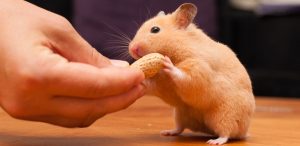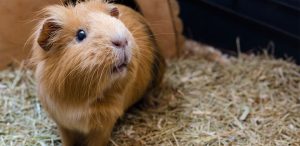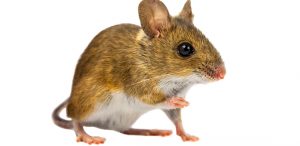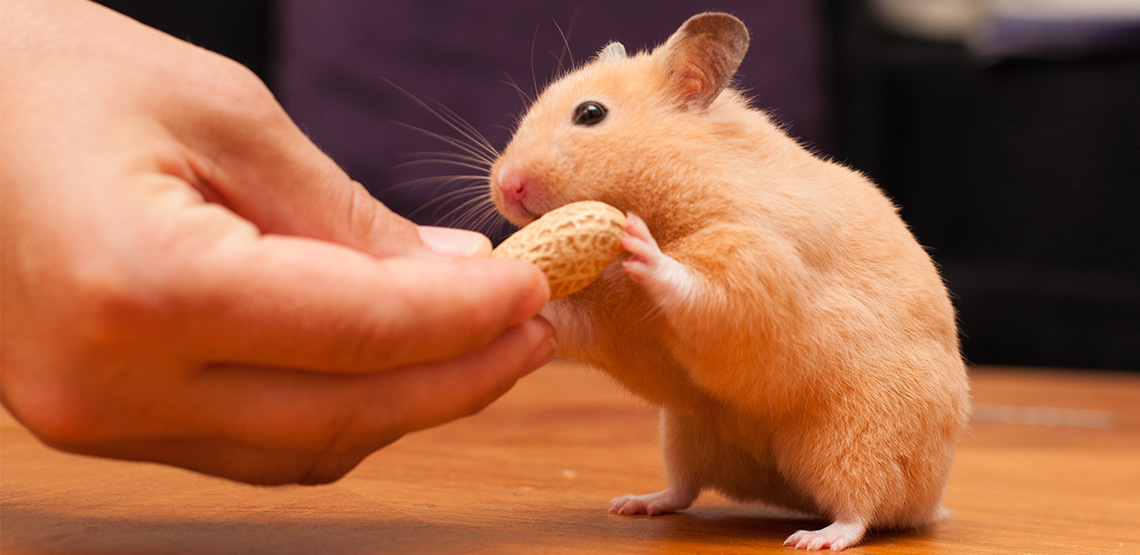
What Type of Rodent Should You Get?
Hamsters, guinea pigs, mice, rats — the rodent list is rather expansive. While some still aren’t too keen on these critters, there are many others who call these pocket pets “friend.” In fact, if you make your way into almost any pet store, you’ll find quite a variety of rodents that are bred specifically for companionship.
The size, shape, color, temperament and lifestyles of these rodents differs between species. If you’re considering bringing one of these tiny treasures home with you, there are a few things to know. Here are some specifics on the most popular rodents to keep as pets, so finding the perfect companion will be an easy decision.
Hamsters
Hamsters are a popular pet to have from the rodent family. Their big eyes, tiny ears, delicate paws, and spunky personalities certainly help catch the attention of prospective pet parents. You can’t help but be drawn to their cute faces and pouched cheeks. But, there is more to these rodents than what first meets the eye.
When hamsters come to mind, most will picture the classic “teddy bear hamster.” These are Syrian hamsters, and are one of the larger varieties of hamsters. They come in all sorts of colors and combinations, and can be either short or long-haired. On average, Syrian hamsters have a lifespan of about 2 to 3 years.
Roborovski, Russian, Winter White, and Chinese Hamsters are often grouped together as dwarf hamsters. These pocket pets are a bit smaller than their Syrian cousins, but have a similar lifespan of anywhere from 1.5 to 3 years. These hamsters often come in variations of browns, tans, grays, and whites, and all tend to have a white belly.
Though often shy, skittish or scared at first, hamsters tend to develop fairly even temperaments, and only becoming cranky and aggressive when scared, awoken abruptly, or when housed together with other hamsters. While most hamsters will tolerate others as housemates for some time, as they age, they become more territorial and may become aggressive toward the same hamster they once snuggled up with. Hamsters like to live more solitary lifestyles, so if you’re considering keeping multiples, it’s suggested that they be housed in separate cages.
Hamsters will be comfortable in either a cage or an aquarium with proper ventilation and spacing. Because Syrian hamsters grow to be larger than dwarf hamsters, you may find that the cage you originally bought for them becomes too small as they age.
Their favorite tunnels can become more difficult to squeeze through, especially when they fill their cheek pouches with their favorite treats. As far as bedding, most recommend using soft paper bedding for both comfort and odor control. You should clean tunnels, houses, and other cage accessories at least once a week.
A complete bedding change is also necessary to ensure they stay healthy, and your home stays odor-free.

Guinea Pigs
Guinea pigs are another popular pet option. These larger rodents grow to weigh about 2 to 3 pounds, and tend to be almost a foot long. Because of their short legs, they have a very stout body and no visible tail.
You’ll find that guinea pigs come in a variety of colors and combinations. You’ll also notice that guinea pigs display an array of hair types. An American coat is smooth and short, an Abyssinian coat is relatively short with rosettes (or “swirls”), a Peruvian coat is long-haired, and a Skinny Pig is a hairless variety.
Guinea pigs definitely require a commitment, and have average lifespans anywhere between 5 to 8 years. However, they tend to be quite good company and don’t ask for much. Most guinea pigs are fairly quiet, but they can also reward their owners with squeals, purrs, and other sounds of affection.
Be sure to provide this large rodent with plenty of space and a large hut to hide in. They aren’t climbers, so one level is all that’s necessary. Cleaning their bedding (preferably soft paper) once or twice a week is recommended. Guinea pigs will do well if kept as same-sex pairs since they enjoy company, but, care should always be taken to monitor any aggression between them.

Rats and Mice
These rodents tend to be the most misunderstood. The stigma behind them is often unwarranted, since both mice and rats are intelligent and affectionate. On average, a mouse’s lifespan is 1.5 to 2 years, whereas a rat will live about 2 to 3 years. Rats and mice that are sold as a “fancy” variety tend to sport longer lives since they have been bred more purposefully.
Both mice and rats come in an array of colors and combinations. Different hair types are seen too, with smooth coats being the most common. However, you may also come across long-haired, rex, and hairless varieties. Their temperaments will vary, but most are very sweet and curious. It’s actually fairly easy to teach these rodents tricks!
Their home should be suited to their adult size. Obviously, a rat will require a larger space than a mouse will. If you have an open, wired cage, keep in mind how far apart the spacing is between the bars. These rodents are masters of escape and won’t pass up an opportunity to slip through.
Paper bedding keeps these pets comfortable and cozy, as does providing them with plenty of places to sleep and hide. A weekly bedding change will keep their cages tidy, but more cleaning will be required if you keep multiples in the same cage. Both mice and rats tend to be quite social, so keeping them in same-sex groups is not unheard of.
However, care should be taken when keeping males together, and it is never recommended to house rats with mice.

Gerbils
These odd little rodents certainly have a lot of spring in their step, and they are fast! You’ll find gerbils keep themselves quite busy throughout the day, tunnelling and chewing. While gerbils aren’t the best cuddlers, they make for great comedians. There’s never a dull moment with these critters, and with an average lifespan of 3 to 5 years, you’re sure to enjoy their antics for quite some time.
You will find gerbils with varying coat colors, most often seen as white, black or beige. They have large back feet and a long tail that make their bodies perfect for jumping. Their temperament is curious, with aggression being rare. However, many tend to be quite skittish and may stress easily.
By providing gerbils with a proper home and plenty to chew on, you can avoid unwanted, destructive tendencies. A weekly change of paper bedding will keep them clean and cozy, just make sure you provide enough of it. Remember, these rodents like to burrow! It is also best to keep gerbils living separately, if you plan on keeping multiples.

Chinchillas and Other Exotic Rodents
Chinchillas are the most common exotic rodent that people keep as pets. However, you may also encounter squirrels, degus, dormice, pouched rats, and many others that are kept as members of the family. Depending on where you reside, it may be unlawful for you to care for these types of animals. It’s best to do your research before committing to any animal’s care.
Housing will vary, depending on which of these exotic rodents appeals to you, though most require a decent amount of space. You may face different hurdles with more exotic rodents since their domestication isn’t as common. One of these difficulties may be finding an appropriate veterinarian. If “rare” is your type of rodent, definitely dive deeper into that particular critter’s care to ensure it will be a good fit!
The world of rodents is one that expands to all types of cute, furry, inquisitive species. Pocket pets bring a whole new level of interaction to pet owners. Finding the perfect companion for you will depend on which personalities and lifestyles best match with your own. Overall, these fantastic furballs can be an enriching addition to almost any family.
